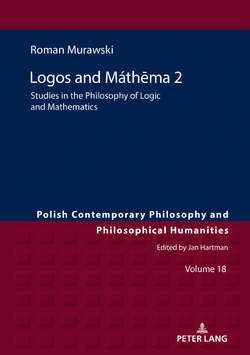Читать книгу Lógos and Máthma 2 - Roman Murawski - Страница 13
Generalized Hilbert’s program
ОглавлениеThe natural consequence of incompleteness results was the idea of extending the admissible methods and allowing general constructive methods instead of finitistic ones only6. This led to the generalized Hilbert’s program.
Though the concept of general constructive methods is unprecise, still the idea of broadening of original Hilbert’s proof theory has become an accepted paradigm. Investigations were carried out in this direction, and several results were obtained (cf. Feferman 1988; Feferman 1964–1968; Gödel 1958; Kreisel 1958; Schütte 1977; Simpson 1985; Takeuti 1987). We want to note here only that they led to two surprising insights: (a) classical analysis can be formally developed in conservative extensions of elementary number theory and (b) strong impredicative subsystems of analysis can be reduced to constructively meaningful theories, i.e., relative consistency proofs can be given by constructive means for impredicative parts of second order arithmetic.
On the other hand, it should be stressed that all the proposed generalizations of Hilbert’s program, are in fact very different from the original Hilbert’s proposal. Hilbert’s postulate was the validation and justification of classical mathematics by a reduction to finitistic mathematics. The latter was important here for philosophical and, say, ideological reasons: finitistic objects and reasonings have clear physical meaning and are indispensable for all scientific thought. None of the proposed generalizations can be viewed as finitistic (whatever it means). Hence they have another value and meaning from the methodological and generally philosophical point of view. They are not contributing directly to Hilbert’s program, but on the other hand they are in our opinion compatible with Hilbert’s reductionist philosophy.
